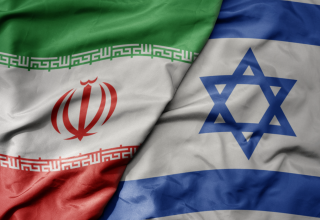by
Dr Don Longo
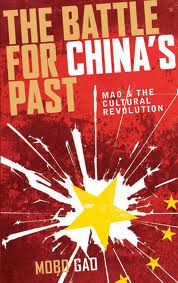 Editorial note: In light of the current United States military build up in the Asia Pacific region which is aimed squarely at containing China, the brief reviews below of recent books on China is timely. Australia, being a willing client state, is deeply immersed in the US ‘Asia Pivot’ strategy by hosting American troops and numerous other military facilities. The contention between these two powers inevitably generates acrimonious diatribes between the two countries and their political systems. The West puts immense effort into demonizing China as a communist police state whilst it considers that the capitalist market economy offers the Chinese the possibility of ‘freedom’. There are a great number of analyses of China’s political and economic history, strategy and potential. These reviews, presented by an academic in the field, offer thoughtful judgement on the contentious information and analysis being published about China.”
Editorial note: In light of the current United States military build up in the Asia Pacific region which is aimed squarely at containing China, the brief reviews below of recent books on China is timely. Australia, being a willing client state, is deeply immersed in the US ‘Asia Pivot’ strategy by hosting American troops and numerous other military facilities. The contention between these two powers inevitably generates acrimonious diatribes between the two countries and their political systems. The West puts immense effort into demonizing China as a communist police state whilst it considers that the capitalist market economy offers the Chinese the possibility of ‘freedom’. There are a great number of analyses of China’s political and economic history, strategy and potential. These reviews, presented by an academic in the field, offer thoughtful judgement on the contentious information and analysis being published about China.”
Books about the past are really about the future, and history is always a battleground for the present. In few fields of study is this more true than in China scholarship, as Western publishers fall over themselves to issue book after book about the origins and directions of modern China. Most of these books are highly questionable, cobbled together to feed the increasing anxiety about China’s emerging role in the world and its challenge to US global power and influence. But there are also some that make genuine attempts to re-assess China’s past and present, avoiding the traditional clichéd views, conservative paranoias, and racist fears, and providing a more nuanced and meaningful analysis of China’s recent history and the social changes currently under way.
For the 120th anniversary of the birth of Mao Zedong (26 December 1893), it is useful briefly to review some of the recent books on China and to outline the diversity of interpretations and meanings about China’s ever-shifting place in the Western imagination and the new world order. To that end, I have provided below a short selection of books on Mao Zedong, the Cultural Revolution and “modern” China, with short commentaries to assist readers in selecting those works they might want to read in full. The selection includes both pathologically negative views to more balanced and serious re-evaluations of Chinese history since 1949.
1. ON MAO & REVOLUTIONARY CHINA
A non-ideological view of Mao is a rarity in the West, where he has been transformed from Cold War adversary to sadistic fiend. Two examples of the latter are books by three hardened conservatives and known apologists for US global hegemony:
Jung Chang and Jon Halliday, Mao: The Unknown Story (Jonathan Cape, 2005).
 In the 1940s, Edgar Snow described Mao as a champion of human rights in the European Enlightenment mode. Not so for Chang (author of Wild Swans) and her historian husband, Jon Halliday. For them, Mao was a monster who sought to create “a completely arid society, devoid of civilization, deprived of representation of human feelings, inhabited by a herd with no sensibility.” Chang and Halliday wildly claim that he killed more than seventy million people in peacetime, and was consequently more diabolical than even Hitler; indeed his victims during the Great Leap Forward (1958-62) were even worse off than the slave laborers at Auschwitz [sic]. Predictably, the book has received glowing accolades in the Western media, has been top of the best seller lists for “hardback non-fiction” in British bookshops, and has been reprinted many times already in the UK and the USA. But the book is empirically flawed (no hard evidence is provided for their calculation of 70m deaths) and conceptually weak (it is riddled with questionable inferences). And its relentless and excessive diatribes make this a very, very silly work, and a crude attempt to discredit the Chinese Revolution and, by association, the ideas of socialism. It is more fiction than history, more caricature than biography. Not recommended.
In the 1940s, Edgar Snow described Mao as a champion of human rights in the European Enlightenment mode. Not so for Chang (author of Wild Swans) and her historian husband, Jon Halliday. For them, Mao was a monster who sought to create “a completely arid society, devoid of civilization, deprived of representation of human feelings, inhabited by a herd with no sensibility.” Chang and Halliday wildly claim that he killed more than seventy million people in peacetime, and was consequently more diabolical than even Hitler; indeed his victims during the Great Leap Forward (1958-62) were even worse off than the slave laborers at Auschwitz [sic]. Predictably, the book has received glowing accolades in the Western media, has been top of the best seller lists for “hardback non-fiction” in British bookshops, and has been reprinted many times already in the UK and the USA. But the book is empirically flawed (no hard evidence is provided for their calculation of 70m deaths) and conceptually weak (it is riddled with questionable inferences). And its relentless and excessive diatribes make this a very, very silly work, and a crude attempt to discredit the Chinese Revolution and, by association, the ideas of socialism. It is more fiction than history, more caricature than biography. Not recommended.
Frank Dikötter, Mao’s Great Famine (Walker & Co, 2010)
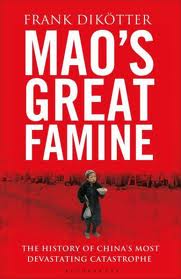 Frank Dikötter is professor of modern Chinese history at the University of Hong Kong. In previous books, he wrote of the benefits of opium smoking to the Chinese and claimed that China under Chiang Kai-shek was a very cosmopolitan society. His new book is equally problematic, wanting to make the famine of 1958-62 “as well known as the two other man-made catastrophes of the twentieth century, the Holocaust and the Gulag.” To that end, he revises the commonly accepted estimate of 30m deaths to “at least 45m” and speculates that the body count could be as high as sixty million. Again, the conservative press has lavished praise on Dikötter, such as conservative Sinologist Roderick MacFarquhar who called the book “Pathbreaking… a first-class piece of research”. But his preposterous comparison of the famine to the Holocaust has raised many eyebrows. Even MacFarquhar has admitted that “what Mao accomplished between 1949 and 1956 was in fact the fastest, most extensive, and least damaging socialist revolution carried out in any communist state.” For an alternative view to Dikotter’s analysis, see: http://chinastudygroup.net/2003/04/the-great-leap-famine-the-cultural-revolution-and-post-mao-rural-reform-the-lessons-of-rural-development-in-contemporary-china/. Not recommended.
Frank Dikötter is professor of modern Chinese history at the University of Hong Kong. In previous books, he wrote of the benefits of opium smoking to the Chinese and claimed that China under Chiang Kai-shek was a very cosmopolitan society. His new book is equally problematic, wanting to make the famine of 1958-62 “as well known as the two other man-made catastrophes of the twentieth century, the Holocaust and the Gulag.” To that end, he revises the commonly accepted estimate of 30m deaths to “at least 45m” and speculates that the body count could be as high as sixty million. Again, the conservative press has lavished praise on Dikötter, such as conservative Sinologist Roderick MacFarquhar who called the book “Pathbreaking… a first-class piece of research”. But his preposterous comparison of the famine to the Holocaust has raised many eyebrows. Even MacFarquhar has admitted that “what Mao accomplished between 1949 and 1956 was in fact the fastest, most extensive, and least damaging socialist revolution carried out in any communist state.” For an alternative view to Dikotter’s analysis, see: http://chinastudygroup.net/2003/04/the-great-leap-famine-the-cultural-revolution-and-post-mao-rural-reform-the-lessons-of-rural-development-in-contemporary-china/. Not recommended.
Against such ludicrous invectives against Mao, it is useful to read different, less clichéd views that are actually supported by empirical evidence rather than excited speculation:
Timothy Cheek, A Critical Introduction to Mao (Cambridge University Press, 2010)
 This is a book of critical essays on the diverse aspects of Mao Zedong and is essentially about Mao’s “Sinification” of the European tradition of social revolution. Mao is given a complex persona. To Cheek, he belonged to a Chinese generation of activists and thinkers who developed a fierce political awareness at the end of a long century of internal decay, humiliations by Western powers and by Japan, and failed imperial reforms. Mao was at heart a Marxist-Leninist but he was also a scholar and an intellectual who felt, like Lenin, that his immense country had stagnated so badly that it required a revolution to turn it round. He wanted a strong, centralized nation-state as a way of resisting foreign imperialists, overcoming domestic warlords, and effecting radical change to bring China political modernity and social solidarity. This is an immensely informative and thought-provoking book. Highly recommended.
This is a book of critical essays on the diverse aspects of Mao Zedong and is essentially about Mao’s “Sinification” of the European tradition of social revolution. Mao is given a complex persona. To Cheek, he belonged to a Chinese generation of activists and thinkers who developed a fierce political awareness at the end of a long century of internal decay, humiliations by Western powers and by Japan, and failed imperial reforms. Mao was at heart a Marxist-Leninist but he was also a scholar and an intellectual who felt, like Lenin, that his immense country had stagnated so badly that it required a revolution to turn it round. He wanted a strong, centralized nation-state as a way of resisting foreign imperialists, overcoming domestic warlords, and effecting radical change to bring China political modernity and social solidarity. This is an immensely informative and thought-provoking book. Highly recommended.
Joel Andreas, Rise of the Red Engineers: The Cultural Revolution and the Origins of China’s New Class (Stanford University Press 2009)
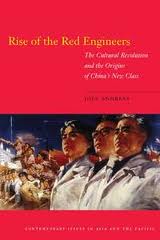 Andreas addresses a paradox: China’s Communist Revolution was rooted in agrarian reform and based on the destruction of class, but has created a new ‘technocratic’ ruling caste. Andreas tries to understand this transformation since 1949, and his book traces the origins of the technocratic officials who rule China today. This story is told through a study of Tsinghua University, which is China’s premier school of technology, and is the party’s preferred training ground for technocrats, including many of China’s current leaders. In today’s China, Andreas explains, it is the engineers who occupy the highest positions in Party leadership and state bureaucracy, and they have come to their positions through their academic and political credentials. Recommended.
Andreas addresses a paradox: China’s Communist Revolution was rooted in agrarian reform and based on the destruction of class, but has created a new ‘technocratic’ ruling caste. Andreas tries to understand this transformation since 1949, and his book traces the origins of the technocratic officials who rule China today. This story is told through a study of Tsinghua University, which is China’s premier school of technology, and is the party’s preferred training ground for technocrats, including many of China’s current leaders. In today’s China, Andreas explains, it is the engineers who occupy the highest positions in Party leadership and state bureaucracy, and they have come to their positions through their academic and political credentials. Recommended.
Melissa Schrift, Biography of a Chairman Mao Badge: the Creation and Mass Consumption of a Personality Cult (Rutgers University Press, 2001)
 The “Mao Badge” is a widespread political icon that is still widely distributed in China. It is estimated that over two billion Mao badges were produced, featuring over fifty thousand different designs and themes. Schrift discusses how these iconic Mao badges have taken on new meanings and how people use them in subversive new ways allowing the badges to develop their own “histories” that go beyond, and modify, the intentions of their creators. The book’s interest lies in its description of how ordinary people respond to and transform the meaning of official symbols, be it in China or elsewhere. I would add, from personal experience, that numerous Mao artefacts are now for sale in Hong Kong street markets. Recommended.
The “Mao Badge” is a widespread political icon that is still widely distributed in China. It is estimated that over two billion Mao badges were produced, featuring over fifty thousand different designs and themes. Schrift discusses how these iconic Mao badges have taken on new meanings and how people use them in subversive new ways allowing the badges to develop their own “histories” that go beyond, and modify, the intentions of their creators. The book’s interest lies in its description of how ordinary people respond to and transform the meaning of official symbols, be it in China or elsewhere. I would add, from personal experience, that numerous Mao artefacts are now for sale in Hong Kong street markets. Recommended.
2. ON THE CULTURAL REVOLUTION
The Cultural Revolution is the event that has seen the greatest number of publications in recent years. The interpretations of the movement are as diverse and contested now as they were in the 1970s. They are of various types:
Conservative pro-west narratives premised on ‘liberal’ values
Roderick MacFarquhar and Michael Schoenhals, Mao’s Last Revolution (Harvard University Press, 2009)
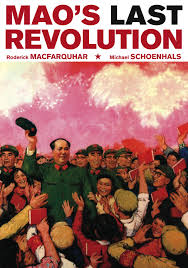 MacFarquhar is director of the Fairbank Center for East Asian Research at Harvard, and Schoenhals is a lecturer on modern Chinese society at Sweden’s Lund University. In a book that smacks of pro-US values, the authors describe why Mao launched the Cultural Revolution, seeing him as a Machiavellian manipulator creating an uncontrollable movement which terrorised and paralysed the country. The years 1966-1976 are seen as a series of ceaseless intrigues, violence and denunciations. When the authors do admit to some positive outcomes it is to take a swipe at socialist ideas:its turmoil has steered people away from (Marxist) ideology, and has lain the foundations for a socially liberal, capitalist society “a saner, more prosperous, and perhaps one day a democratic China.” A tedious and predictable account from page 1. Not recommended.
MacFarquhar is director of the Fairbank Center for East Asian Research at Harvard, and Schoenhals is a lecturer on modern Chinese society at Sweden’s Lund University. In a book that smacks of pro-US values, the authors describe why Mao launched the Cultural Revolution, seeing him as a Machiavellian manipulator creating an uncontrollable movement which terrorised and paralysed the country. The years 1966-1976 are seen as a series of ceaseless intrigues, violence and denunciations. When the authors do admit to some positive outcomes it is to take a swipe at socialist ideas:its turmoil has steered people away from (Marxist) ideology, and has lain the foundations for a socially liberal, capitalist society “a saner, more prosperous, and perhaps one day a democratic China.” A tedious and predictable account from page 1. Not recommended.
Memoirs
Memoirs are always subjective, and often are blatantly self-serving as authors become willing tools of new regimes in search of legitimacy. Such is the case with the first two books below. The third is more useful:
Gao Yuan, Born Red: Chronicle of the Cultural Revolution (Stanford University Press, 1987)
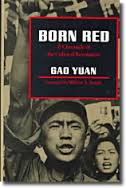 Though dated, this is a famous account of the years 1966-1969 when the author was a young teenager at middle school. Gao’s father was a county political official and the interplay between father and son and the differing perceptions and impact of the Cultural Revolution for the two generations are the only really interesting parts of this book. The rest of Gao’s account, like so many others in this genre, follows the traditional pattern that comforts conservatives everywhere: exhilaration at initial victories, followed by deepening disillusionment and ending in defeatism and renunciation of the evil ideology. Not recommended.
Though dated, this is a famous account of the years 1966-1969 when the author was a young teenager at middle school. Gao’s father was a county political official and the interplay between father and son and the differing perceptions and impact of the Cultural Revolution for the two generations are the only really interesting parts of this book. The rest of Gao’s account, like so many others in this genre, follows the traditional pattern that comforts conservatives everywhere: exhilaration at initial victories, followed by deepening disillusionment and ending in defeatism and renunciation of the evil ideology. Not recommended.
Chihua Wen and Bruce Jones, The Red Mirror: Children of China’s Cultural Revolution (Westview Press, 1995)
 The first-person stories in this collection describe the personal impact of the Cultural Revolution on the families of China’s intellectuals from 1965 to 1976 and its influence on their subsequent lives. These “survivors” reflect on their experiences with ideology (being sent to the country, separation from family) and conclude that it was a failed social and political experiment and led to its participants becoming cynical and disenchanted with politics, the Party, and life itself [sic]. Again, a book to comfort the Washington neo-cons. Not recommended.
The first-person stories in this collection describe the personal impact of the Cultural Revolution on the families of China’s intellectuals from 1965 to 1976 and its influence on their subsequent lives. These “survivors” reflect on their experiences with ideology (being sent to the country, separation from family) and conclude that it was a failed social and political experiment and led to its participants becoming cynical and disenchanted with politics, the Party, and life itself [sic]. Again, a book to comfort the Washington neo-cons. Not recommended.
Yan Jiaqi and Gao Gao, Turbulent Decade: A History of the Cultural Revolution (University of Hawaii Press, 1996)
 An initial account the Revolution was written in 1986 by Yan Jiaqi (one of the leaders of China’s pro-democracy movement) and his wife, Gao Gao, a noted sociologist. It first appeared in Hong Kong and was banned by the Communist government. The present book is a revised edition. Part 1 of the narrative focuses on the years 1965-1967. Part 2 analyses the rise and fall of Lin Biao during the years 1959-1971. Part 3 follows Jiang Qing from 1966 to her arrest in 1976 for her part in instigating mass violence and the persecution of key figures. The book is a useful account of the links between the Cultural Revolution and the current pro-democracy movement, but beyond that it is of limited value.
An initial account the Revolution was written in 1986 by Yan Jiaqi (one of the leaders of China’s pro-democracy movement) and his wife, Gao Gao, a noted sociologist. It first appeared in Hong Kong and was banned by the Communist government. The present book is a revised edition. Part 1 of the narrative focuses on the years 1965-1967. Part 2 analyses the rise and fall of Lin Biao during the years 1959-1971. Part 3 follows Jiang Qing from 1966 to her arrest in 1976 for her part in instigating mass violence and the persecution of key figures. The book is a useful account of the links between the Cultural Revolution and the current pro-democracy movement, but beyond that it is of limited value.
Sympathetic re-evaluations from a left perspective
Symposium at UC Berkeley: Rediscovering China’s Cultural Revolution—Art and Politics, Lived Experience, Legacies of Liberation. November 6, 2009. Over 250 people attended. Summaries of the papers are available at: http://revcom.us/a/184/symposium_report-en.html.
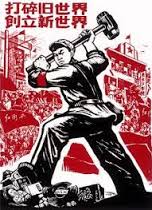 Panelists included: Lincoln Cushing, co-author, Chinese Posters: Art from the Great Proletarian Cultural Revolution; Bai Di, co-editor of Some of Us: Chinese Women Growing Up During the Mao Era; Dongping Han, author, The Unknown Cultural Revolution: Life and Change in a Chinese Village; Raymond Lotta, writer for Revolution and editor, Maoist Economics and the Revolutionary Road to Communism; Robert Weil, author, Red Cat, White Cat: China and the Contradictions of “Market Socialism”.
Panelists included: Lincoln Cushing, co-author, Chinese Posters: Art from the Great Proletarian Cultural Revolution; Bai Di, co-editor of Some of Us: Chinese Women Growing Up During the Mao Era; Dongping Han, author, The Unknown Cultural Revolution: Life and Change in a Chinese Village; Raymond Lotta, writer for Revolution and editor, Maoist Economics and the Revolutionary Road to Communism; Robert Weil, author, Red Cat, White Cat: China and the Contradictions of “Market Socialism”.
Though not a book, this event deserves greater recognition and promotion. The panelists were of varied backgrounds and fields and had different perspectives on the Cultural Revolution; but all believed that this this event, so demonised in the West, was a liberating episode needing rediscovery and reevaluation by Leftist movements world-wide. Raymond Lotta summed up the dominant sentiment at the symposium: “It was a society-wide political movement and struggle that brought about immense and egalitarian changes in Chinese society – in political institutions, education, health care, culture and women’s participation in society.” Panelists pointed out that it furthered the gender equality, empowered local committees to build schools, created new models of health care, and created institutional models through which society can work together to “serve the people” and end the atomization and alienation generated by capitalism. Highly recommended.
Mobo Gao, The Battle for China’s Past (Pluto Press, 2008)
 The target of this very important book is the widespread demonization, in both China and the West, of the Cultural Revolution. Mobo Gao goes beyond historical research by contrasting the negative accounts of mainstream Western media with the alternative views in the extensive Chinese-language internet-based e-media. Through this methodology, he is able to rehabilitate the Cultural Revolution and argue from a strong base that it benefited both China and the broad masses of the Chinese people. The author points out the many neglected benefits of the event to ordinary people: it encouraged grassroots participation in management; it inspired the idea of popular democracy; it allowed the Red Guards to assist people in a variety of ideological disputes and contests for power; it laid the foundations of economic prosperity. Most of all, he shows that the Chinese were not brainless masses manipulated by a ruthless dictator but agents of history and subjects of their own destinies. Gao is also critical of the contemporary Chinese elite who denigrate the Cultural Revolution and Mao Zedong’s policies, arguing the statements stem from an identification with Western values; they have, in effect, capitulated to liberal capitalism. The author also analyses why the West promotes negative portrayals of Mao and the Cultural Revolution: “without a complete uprooting of the CCP in China it is not yet the End of History… in this global climate of liberal democracy and neoconservative market capitalism triumph, the fall of the Berlin Wall is not enough to draw the final curtain.” The Great Wall of China has to come down so as to bury revolution permanently. In my view however, Fidel and Raúl Castro also have to die for the Washington neo-cons to believe the End of History has become an enduring reality. Very highly recommended.
The target of this very important book is the widespread demonization, in both China and the West, of the Cultural Revolution. Mobo Gao goes beyond historical research by contrasting the negative accounts of mainstream Western media with the alternative views in the extensive Chinese-language internet-based e-media. Through this methodology, he is able to rehabilitate the Cultural Revolution and argue from a strong base that it benefited both China and the broad masses of the Chinese people. The author points out the many neglected benefits of the event to ordinary people: it encouraged grassroots participation in management; it inspired the idea of popular democracy; it allowed the Red Guards to assist people in a variety of ideological disputes and contests for power; it laid the foundations of economic prosperity. Most of all, he shows that the Chinese were not brainless masses manipulated by a ruthless dictator but agents of history and subjects of their own destinies. Gao is also critical of the contemporary Chinese elite who denigrate the Cultural Revolution and Mao Zedong’s policies, arguing the statements stem from an identification with Western values; they have, in effect, capitulated to liberal capitalism. The author also analyses why the West promotes negative portrayals of Mao and the Cultural Revolution: “without a complete uprooting of the CCP in China it is not yet the End of History… in this global climate of liberal democracy and neoconservative market capitalism triumph, the fall of the Berlin Wall is not enough to draw the final curtain.” The Great Wall of China has to come down so as to bury revolution permanently. In my view however, Fidel and Raúl Castro also have to die for the Washington neo-cons to believe the End of History has become an enduring reality. Very highly recommended.
Dongping Han, The Unknown Cultural Revolution (Garland Pub, 2000)
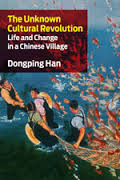 Dongping Han offers a powerful account of the dramatic improvements in the living conditions, infrastructure and agricultural practices of China’s rural population that emerged during this period. Like Mobo Gao, he shows that the Cultural Revolution helped overthrow local hierarchies, establish participatory democracy and economic planning in the communes and expanded education and public services. The event “democratized village political culture and spurred the growth of rural education,” writes Han, “leading to substantial and rapid economic development.” Han Dongping believes that the militancy of today’s rural workforce in China is a direct legacy of the Cultural Revolution. Highly recommended.
Dongping Han offers a powerful account of the dramatic improvements in the living conditions, infrastructure and agricultural practices of China’s rural population that emerged during this period. Like Mobo Gao, he shows that the Cultural Revolution helped overthrow local hierarchies, establish participatory democracy and economic planning in the communes and expanded education and public services. The event “democratized village political culture and spurred the growth of rural education,” writes Han, “leading to substantial and rapid economic development.” Han Dongping believes that the militancy of today’s rural workforce in China is a direct legacy of the Cultural Revolution. Highly recommended.
Paul Clark, The Chinese Cultural Revolution: A History (Cambridge University Press, 2008)
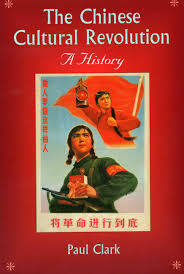 A fascinating study of cultural life during the Cultural Revolution that explodes the Western myths about its destructiveness and chaos. Through various cultural forms (film, operas, dance, other stage arts, music, fine arts, literature and architecture), Clark shows that the decade was rich in innovation and creativity, promoted cultural production, and encouraged bottom-up modernisation. For example, the Red Guards introduced new stage works which were sometimes agitprop, but frequently provided new engagements with the process and values of modernity. A masterful book. Highly recommended.
A fascinating study of cultural life during the Cultural Revolution that explodes the Western myths about its destructiveness and chaos. Through various cultural forms (film, operas, dance, other stage arts, music, fine arts, literature and architecture), Clark shows that the decade was rich in innovation and creativity, promoted cultural production, and encouraged bottom-up modernisation. For example, the Red Guards introduced new stage works which were sometimes agitprop, but frequently provided new engagements with the process and values of modernity. A masterful book. Highly recommended.
The Cultural Revolution in Europe
Richard Wolin, The Wind from the East: French Intellectuals, the Cultural Revolution, and the Legacy of the 1960s (Princeton University Press 2010)
 Thinkers and artists like Michel Foucault, Jean-Paul Sartre, Julia Kristeva, Phillipe Sollers, and Jean-Luc Godard have now become household names in academic and political circles. This book represents a novel perspective on the Cultural Revolution: the response of these Leftist French intellectuals to the events. Wolin describes their fascination with the Revolution and Maoism. Though Wolin argues that this had little to do with real Chinese politics, he also shows how the events in China became an agent for liberation and change in French (and European) societies. Misunderstood or not, the Cultural Revolution was a major influence on the revolts in France and elsewhere, in 1968 and beyond. An interesting book for students of French philosophy and post-modern theory.
Thinkers and artists like Michel Foucault, Jean-Paul Sartre, Julia Kristeva, Phillipe Sollers, and Jean-Luc Godard have now become household names in academic and political circles. This book represents a novel perspective on the Cultural Revolution: the response of these Leftist French intellectuals to the events. Wolin describes their fascination with the Revolution and Maoism. Though Wolin argues that this had little to do with real Chinese politics, he also shows how the events in China became an agent for liberation and change in French (and European) societies. Misunderstood or not, the Cultural Revolution was a major influence on the revolts in France and elsewhere, in 1968 and beyond. An interesting book for students of French philosophy and post-modern theory.
3. ON ECONOMIC REFORM AND THE NEW CHINA
Many recent books have tried to assess the changes in Chinese politics, society and economics since the 1980s. Most of them focus on China’s place in the new world order, and specifically on its relationship to the USA. The books shuffle between hope and paranoia.
Tash Aw, Five Star Billionaire (Harper Collins, 2013) and Helen Wang, The Chinese Dream: The Rise of the World’s Largest Middle Class and What It Means to You (Bestseller Press, 2010)
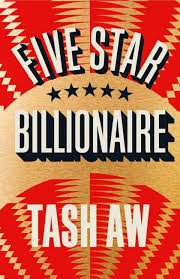
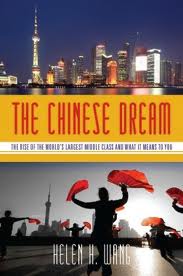
These two books, explore the Chinese equivalent of the American Dream. The first is a fictional account of five arrivals in Shanghai who are drawn together in a glitzy city that ultimately devours their cash as well as their lives and dreams. The modern “Chinese dream” is shown as illusory as the American one. In the second, the author argues that the rising middle class is important to both the economic health of China and the USA. The book also expresses nostalgia for the lost optimism the USA once represented.
Ann Lee, What the US Can Learn from China (Berrett Koehler Publishers,2012); Ivan Tselichtchev, China Versus the West: The Global Power Shift of the 21st Century (Wiley, 2012); Giles Chance, China and the Credit Crisis: the Emergence of a New World Order (Wiley, 2010); Randall Peerenboom, China Modernizes: Threat to the West, or Model for the Rest? (Oxford University Press, 2008)
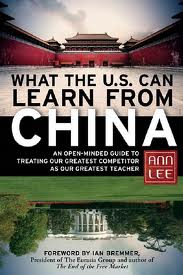
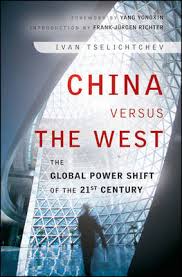

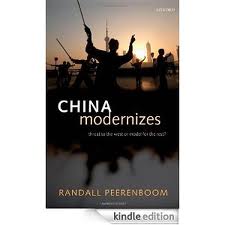
These books explore China-West relationships and the power imbalance of that relationship. Lee explores what China’s growth means as the USA’s influence and economic strength declines. Indeed, she sees China’s model for growth – leadership, determination and ideological pragmatism – as one the USA should follow. Tselichtchev assesses the battle for global economic supremacy head on, seeing it less as a ‘clash of civilizations’ than a difference in economic systems. Like Lee, he believes that China represents the stronger society in the long run. Chance takes this further by exploring the connection between United States policy and China’s participation in globalization. He is especially interesting in his discussion on the future of the US dollar and the need to take China’s economic needs into account by the world’s financial and regulatory systems. In Peerenboom’s view, China’s economic development model (state-led change) is more in line with that of its east Asian neighbours than of the USA. Contrary to most Americans, Peerenboom gives much praise to China’s political leaders for their economic reforms, and argues that China’s record on political and civil rights is made up for by its economic and social improvements. Recommended.
Carl E Walter and Fraser J T Howie, Red Capitalism: The Fragile Financial Foundation of China’s Extraordinary Rise (Wiley, 2012); Stefan Halper, The Beijing Consensus (Basic Books, 2010)

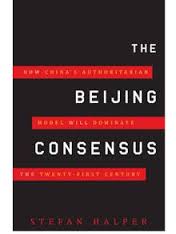
These two books take different views to the ones reviewed above. They express scepticism that China can adequately cope with the crises implicit in its own rapid growth and uneven development. Walter and Howie question the Communist Party’s motives in embracing the free market and whether it can survive within it. Halper argues that the Party will not only survive but endure and even prosper and will become a challenge the global dominance of the West. However, it is motivated less by a wish for supremacy than by a need to survive any possible revolts by the people due to its abandonment of Marxism: its “State capitalism” must continue to provide wealth and consumer goods, or fall.
Jeffrey N. Wasserstrom, China’s Brave New World – and Other Tales of Global Times (Indiana University Press, Bloomington, 2007)
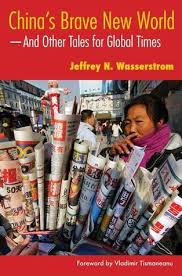
Wasserstrom is not convinced that China, and indeed much of the world, is becoming increasingly Westernized, that is, Americanized. He argues that the usual measures of this Americanisation, such as the number of KFC or McDonald outlets, hides the other cultural influences in China like karaoke bars and sushi that are “as popular as Starbucks.” And in China’s philosophy bookstores Heidegger, Foucault and Barthes vie with Marx and Lenin for space. An interesting and insightful book, with many new and surprising perspectives about modern China. Highly recommended.
Acknowledgements:
I have relied on a number of sources for the list of books and book reviews, principally the following:
· http://www.newyorker.com/arts/critics/books/2010/
· Denise Y. Ho in http://muse.jhu.edu/login?auth=0&type=summary&url=/journals/china_review_international/v018/18.3.ho01.html
· http://chinabookreviews.weebly.com/book-reviews.html
· http://www.amazon.com
· http://chinastudygroup.net/2007/
· http://www.revolutionbooks.org/
· Jason Lee in http://chinabookreviews.weebly.com/
· http://www.atimes.com/atimes/book_reviews.html


